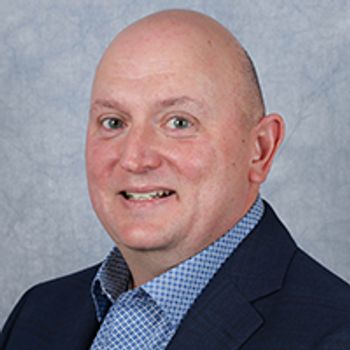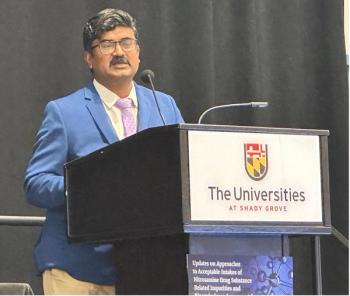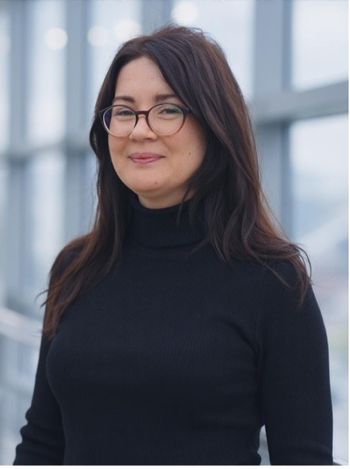
Miniaturizing Biomarker Detection
The development of novel microfluidic systems opens up new opportunities to quantify clinically relevant biomolecules to further the understanding and diagnosis of disease. The 2015 recipient of the AES Mid-Career Award, Adam T. Woolley, from Brigham Young University, Utah, is working in this area to develop novel and sophisticated integrated microfluidic systems for enhanced biomarker quantitation and quantification. He recently spoke to LCGC about this work.
The work of your research group is centered on miniaturizing analysis and quantitation techniques to quantify clinically relevant biomolecules. What motivated you to begin work in this area?
We were initially motivated by two very different aspects of the significance of this problem. First, it was challenging-quantifying clinically relevant biomolecules is complex and requires creative solutions. Second, success in this endeavor helps humanity, by improving disease detection and facilitating treatment options.
In 2013, you published work demonstrating the application of a nanofluidic-based sieving system to fractionate proteins (1). Can you tell us about how you designed the method and the principles behind it?
This project arose from a long-standing collaboration with several colleagues at BYU. Our method utilizes an array of 200 parallel nanochannels (1 mm length, 20 µm width, and nanometer-scale height). These channels each have a step that takes the channel height from about 100 nm down to 15–30 nm. Capillary action draws solutions through the nanochannels, and larger objects are trapped at the height steps while smaller ones reach the ends of the nanochannels.
What are the advantages of the nanofluidic-based sieving system compared to existing techniques, such as size-exclusion chromatography (SEC)?
SEC can reproducibly separate molecules based on size but requires a >10% difference in molecular weight for adequate resolution. Field-flow fractionation (FFF) can separate molecules and particles in the size range of 1 nm to 50 μm, but FFF requires a complex setup and experienced personnel. Membrane filtration fractionates based on a single cutoff size but suffers from sample loss, fouling, and pore clogging. Ultracentrifugation, which separates molecules based on size or density, is slow and energy intensive. Gradient gel electrophoresis can separate biomolecules with high resolution based on electrophoretic mobility, but this technique is time consuming and requires skilled personnel.
Our nanofluidic system provides size separation of structures like proteins in the 10 nm diameter range. The size range is readily tunable using widely available thin-film micromachining methods. Our approach thus offers advantages over the aforementioned nanoscale fractionation methods in terms of device size and simplicity, reduction of reagent volumes, and assay speed.
In a recent study (2) you developed a microfluidic device to quantify nucleic acid biomarkers, specifically microRNA (miRNA). Please can you describe what miRNA molecules are and how they function?
MicroRNAs (miRNAs) are short (~22-base) non-coding RNA sequences that biochemically modulate gene expression. They affect development, cell proliferation, apoptosis, and a variety of other biochemical processes. Already thousands of human miRNA sequences have been identified. Changes in the levels of specific miRNAs have recently been found to occur in many diseases. Since miRNAs are found in biological fluids like blood, urine, cerebrospinal fluid, and so on, miRNAs have great promise as diagnostic biomarkers for diseases.
How are miRNA molecules quantified in the clinic for the diagnosis of disease?
The link between miRNAs and diseases has only recently been appreciated. Presently, a method called stem-loop reverse transcriptase quantitative PCR is the most widely used technique for measuring miRNAs. The problem with this method is that it doesn’t measure miRNA concentrations directly-it only tells you how many cycles it took to be able to achieve specific amplification. Thus, there is currently a lot of interest in developing improved methods to analyze for miRNAs and directly determine their concentrations.
Can you describe the principles of your microfluidic device and how it was developed? What are the advantages of your method over other existing methods?
The development of this microfluidic device resulted from the realization that you can tell from simple visual inspection whether or not a microfluidic channel is filled with liquid. We form microchannels in an elastomeric material and coat channel surfaces with complementary oligonucleotide receptors. When solution containing the target nucleic acid flows through a channel, the target binds to the two different complementary receptor sequences, which results in constriction of the microchannel such that flow stops after a given time or flow distance. The concentration is correlated with the flow distance and can thus be inferred by simple visual inspection of the device.
Our approach is highly advantageous because it combines simplicity, specificity and performance. No external detection hardware is required for operation, so the devices are well suited for point-of-care or resource-limited applications. Additionally, we are able to detect very low concentrations (10 pg/mL) of nucleic acids, such that we are near clinical miRNA levels in urine. Finally, our method can discriminate non-complementary and even single-base mismatched sequences from the target sequence. These characteristics are all very desirable for a number of bioanalysis applications.
What are you working on at the present?
My group has several exciting projects ongoing. We are developing an integrated microfluidic system that should allow the quantitation of a number of blood biomarkers related to pre-term birth in pregnancies; knowing the concentrations of these biomarkers should allow the risk for a pre-term delivery to be predicted and treatment (if needed) to be initiated. We also recently received some funding in collaboration with several colleagues to develop a rapid DNA-based diagnostic system for determining bacterial infections in blood, to facilitate improved treatment. Finally, we are studying the use of the self-assembly properties of DNA to make nanometer-scale components with potential for use in electronics.
References
1. S. Kumar, J. Xuan, M.L. Lee, H.D. Tolley, A.R. Hawkins, and A.T. Woolley, Lab on a Chip13, 4591–4598 (2013).
2. D. Chatterjee, D.S. Mansfield, and A.T. Woolley, Analytical Methods 6, 8173–8179 (2014).
Email:
Website:
Adam T. Woolley graduated summa cum laude with a B.S. in Chemistry from Brigham Young University (BYU) in 1992. He received his PhD in Chemistry in 1997 from the University of California–Berkeley under the direction of Professor Richard Mathies. His doctoral research involved the development of micromachined electrophoretic systems for rapid DNA analysis, and his work was recognized with the 1998 Fannie and John Hertz Foundation Thesis Prize. Woolley was a Cancer Research Fund Runyon-Winchell Foundation Postdoctoral Fellow in the group of Professor Charles Lieber at Harvard University from 1998 to 2000. His postdoctoral work focused on implementing carbon nanotube probes for high-resolution biological scanning probe microscopy. After postdoctoral studies, Woolley joined the Department of Chemistry and Biochemistry at BYU. He was promoted to Associate Professor in 2006 and to Professor in 2010. Prof. Woolley has also served as an Associate Department Chair since 2010.
Professor Woolley is author or coauthor of more than 100 peer-reviewed papers, has given over 130 scientific presentations and has received 10 patents related to his work. He has received several recognitions, including the American Chemical Society Division of Analytical Chemistry Award for Young Investigators in Separation Science (2007), Presidential Early Career Award for Scientists and Engineers (2007), BYU Young Scholar Award (2008), BYU Reed M. Izatt and James J. Christensen Faculty Excellence in Research Award (2012), and BYU Karl G. Maeser Research and Creative Arts Award (2014).
Newsletter
Join the global community of analytical scientists who trust LCGC for insights on the latest techniques, trends, and expert solutions in chromatography.





